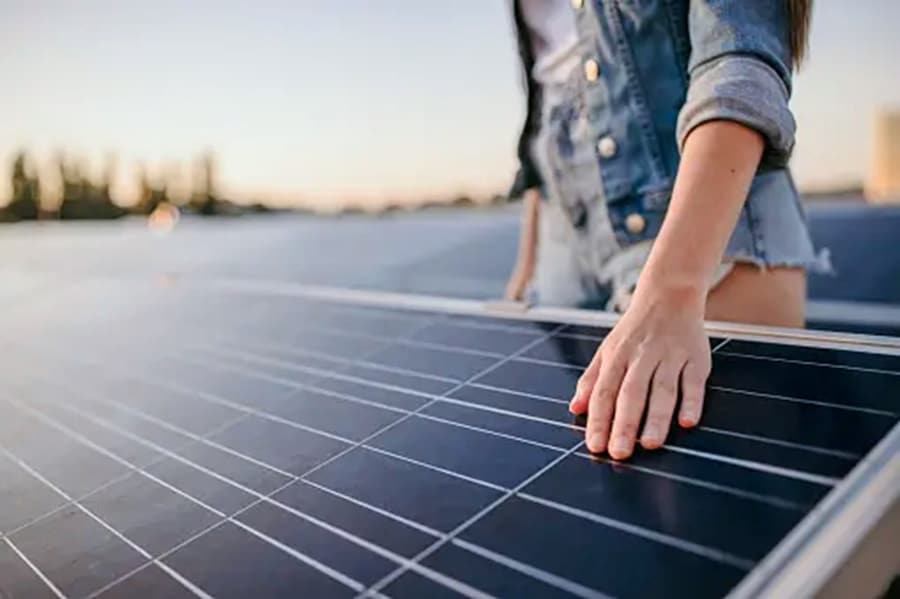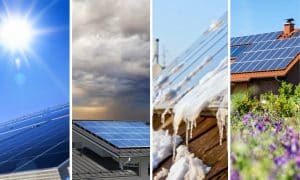With solar energy being increasingly used both residentially and commercially in Australia, you might often hear the term “solar self-consumption.” But what does it mean, and how does it affect Australians’ use of solar power? In this article, we’ll discuss what self-consumption of solar energy means, what’s happening with the shift in using solar power in the country, and how Australians can make the most of their solar self-consumption.
What solar self-consumption is
Solar self-consumption refers to the practice of using the electricity generated by one’s own solar panel system rather than exporting it to the grid.
Solar self-consumption can be done in two ways. One is using solar power directly from the solar panels, and the other is storing solar energy in a battery to be used later.
Use our easy-to-use solar power and battery storage calculator to determine the size of your solar system with storage! Our solar calculator will generate performance information and potential savings.
We can send this information to 3 of our pre-vetted and trusted local installers in your area to receive obligation-free solar quotes.
The shift in solar power utilisation in Australia
Solar feed-in tariffs were introduced in Australia in 2008, offering solar users generous incentives—usually more than 30 cents per kilowatt-hour (kWh)—for selling to the grid the excess solar energy produced by their solar panel systems. This encouraged the widespread adoption of solar installations.
However, due to a decrease in feed-in tariffs—with certain areas having as low as 3 cents per kWh—the focus has changed. With the reduced feed-in tariffs, falling solar system prices, and the cost-effectiveness of battery storage still out of reach for many, homeowners and businesses are adapting by maximising the use of the solar energy they produce directly within their homes or commercial buildings, instead of selling it to the grid.
As a result, solar self-consumption has become a key strategy for Australians seeking to leverage solar power more efficiently. This not only mitigates the impact of reduced feed-in tariffs but also reduces reliance on grid electricity, signalling a shift towards more sustainable and self-sufficient energy use practices within the Australian solar market.
How to maximise solar self-consumption
If you’re looking to maximise your solar self-consumption, here are some key strategies we recommend:
Right-sizing your system
Choose a solar power system that matches your energy consumption patterns and lifestyle. A well-sized system ensures you generate enough energy for your needs, making the most of solar power during daylight hours.
- Read more about Solar Panel Sizes, Dimensions And Wattage.
Using appliances during peak solar production
Use high-energy appliances (e.g., dishwasher, washing machine, air conditioner) during the day, when your solar system is generating the most power. This reduces the need to draw electricity from the grid, leading to higher savings.
Leveraging smart technology
Implement timers for appliances to operate during peak solar production hours. You can also use smart devices that adjust consumption based on real-time solar generation, using solar energy more efficiently. Furthermore, you can invest in solar diverters and smart switches to automatically redirect excess solar energy to appliances or storage systems, enhancing your self-consumption rate.
Monitoring and managing your energy usage
This strategy is related to the previous point. Keep track of your solar energy production and consumption through monitoring systems to help identify opportunities to increase self-consumption. Adjusting your energy usage habits based on this data can lead to greater savings. You can also use solar monitoring systems to track when and how much electricity your solar panels are producing and align your energy usage accordingly to consume more solar power when it’s available.
Considering upgrading to energy-efficient appliances
Invest in energy-efficient appliances to reduce overall energy consumption, allowing a greater portion of your solar generation to cover your needs.
Planning for your future energy needs
Consider your future energy requirements, such as electric vehicle charging or home expansions. Preparing for increased energy needs ensures that your solar system remains effective and continues to offer savings in the long run.
Considering the integration of batteries
While not necessary for maximising self-consumption, if you can, consider adding a battery storage system to further increase your self-sufficiency and ensure you use as much of your solar energy as possible, especially during non-sunlight hours.
Power your home or business with the sunshine above and the wind at your back! Ditch the grid or off-grid and embrace clean energy independence with a customised solar + wind + battery storage system.
Energy Matters connects you with 3 FREE solar quotes from local, vetted installers, ensuring you get the perfect fit and the best price. Click today and unlock the future of energy!
The broader impact of solar self-consumption
Solar energy self-consumption in Australia offers profound benefits, not only economically but environmentally as well:
- Economical benefits: Solar self-consumption leads to lower energy bills for households, enhancing energy independence and financial savings over time. As solar power systems become more affordable and efficient, the return on investment increases, making solar energy an even more attractive option for Australians. This self-sufficiency in energy production also reduces the strain on the national grid, especially during peak demand times, thereby contributing to a more stable and reliable energy supply, and potentially leading to lower energy costs for all consumers.
- Environmental benefits: Environmentally, solar self-consumption significantly reduces the carbon footprint of households and businesses, contributing to global efforts to combat climate change. By utilising solar power directly, Australians are decreasing their reliance on fossil fuels, thus lowering greenhouse gas emissions and promoting cleaner air and a healthier environment.
Conclusion
Solar self-consumption represents a major shift in the way Australians harness and use solar energy. By focusing on consuming the energy produced by their own solar systems, households and businesses can significantly reduce their reliance on the grid, lower their energy bills, and contribute to a more sustainable energy landscape.
If you’re considering making the switch to solar power or looking to optimise your current solar setup for maximum self-consumption, now is the best time to act. Contact us at Energy Matters, and we’ll guide you every step of the way.
Ready to go solar? Get an instant assessment
To find out how much a solar system with storage or even an EV charger will cost, try our easy-to-use solar power and battery storage calculator! Our solar calculator will generate performance data as well as possible cost savings.
We can forward your information to 3 trusted local installers in your area to obtain free, no-obligation solar quotes.
Find out how much you can expect to pay for solar
Ready to find out more? Get FREE quotes for solar, batteries + more
*Prices quoted are to be used as a guide only and do not factor in state and other rebates and incentives. Includes STC discount.













































